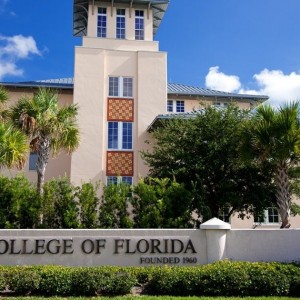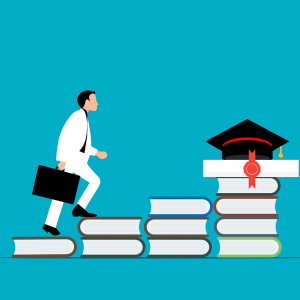Reimagining Education
Guest Correspondence
SRQ DAILY
SATURDAY DEC 26, 2020 |
BY DR. LARRY THOMPSON
Undoubtedly, the coronavirus pandemic has affected virtually every aspect of our daily lives. Everything about the way we work, shop, socialize, learn and live has felt the impact. While the changes have been everywhere, for many, the most anxiety was caused by the disruption the pandemic has had to education. It is estimated that the educations of more than 300 million students globally were disrupted as a result of the COVID-19 pandemic. Yes, 300 million.
From the earliest days of the crisis in March, families were thrown into turmoil as schools and
daycares closed, and the entire educational system – from kindergarten to college – started looking for new, innovative ways to educate children and young adults. Parents found themselves thrust into the role of teachers, often while doing their best to figure out their own new ways of working. Students had to adjust to completely new ways of learning. They could not have their dedicated teachers looking over their shoulders to see their work or explain their assignments. Plus, students did not have the support of learning with their peers that occurs naturally in classrooms. To say the least, it was a challenge for families and educators.
Although the summer provided educators the time to more fully develop virtual learning curricula, it was somewhat like drinking out of a fire hose. As Simone Stolzoff, senior communication designer at IDEO San Francisco, says, “In two months, the world of education [has] shifted faster than it has in the past 200 years.” Many institutions had not been offering fully online learning prior to the pandemic. Shifting from a totally in-person model to a fully remote one is incredibly difficult under the best of circumstances. With the onset of the pandemic, many institutions, including Ringling College of Art and Design, made that shift in a matter of weeks. Even taking the three months of summer to revamp an entire curriculum’s delivery method is a Herculean task – but schools around the world did it. They had no choice.
As we moved into the fall, institutions looked ahead to offering not just one, but multiple modalities to educate students. Many schools are now using a variety of instructional models simultaneously, ranging from fully in-person to fully remote environments, and everything in between. They are finding new ways to continue developing their students through co-curricular activities and fostering community amongst their students despite the challenges imposed by COVID-19. The level of creativity and innovation that education has seen in the last seven months is astounding.
Despite the successes, however, many obstacles remain. Schools are still working to ensure students receive the quality of education and support they need. Inequities in student access to resources such as reliable internet and disparate levels of teacher expertise and knowledge of how to deliver virtual instruction are just two of the many issues that still need attention. So, while it is not perfect, one thing has become very clear: Technology as an educational tool saved education during COVID. And, it is likely here to stay in ways not previously imagined. Stolzoff put it well: “Many of the creative workarounds that have emerged in response to the pandemic are more than Band-Aid solutions; they are postcards from the future.”
Some believe this pandemic has proven that technology is the future of education, that it is the way to make education more efficient and solve its financial issues. That is simply NOT TRUE. Teachers are not irrelevant in this new world; indeed, the very opposite is in fact true. As George Couros, innovative teaching and leadership consultant, says, “Technology can never replace great teachers, but technology in the hands of great teachers is transformational.” Teachers are needed to inspire, motivate, engage and support students. The technology is only another tool in the teacher’s toolbox. We cannot discount the value and importance of in-person teacher-student and peer-to-peer student interaction to learning. But, integrating those pieces — the technological tools and the human knowledge — with intentionality and thoughtfulness… that will enable us to truly reimagine education.
The coronavirus pandemic forced us to rethink education. Like we did with the arts and work, we are seeing that there are some great benefits to retain from the creative ways schools innovated to make education work in the COVID era. As John M. McLaughlin, managing partner at McLaughlin Advisors, says, “a return to school life before COVID [is] unrealistic. Humpty Dumpty has fallen and there is no putting him back together again.” Rather, the trick will be to make sure we merge the best parts of what we had with what we have learned to create a reimagined educational system that truly succeeds in preparing students for the future.
Dr. Larry Thompson is president of Ringling College of Art & Design.
« View The Saturday Dec 26, 2020 SRQ Daily Edition
« Back To SRQ Daily Archive











